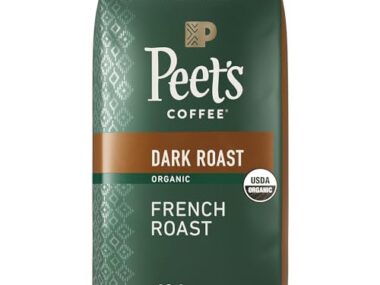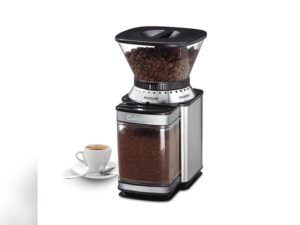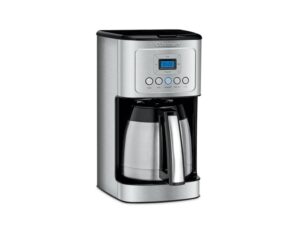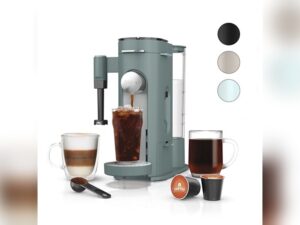You deserve a great cup of coffee every morning, right in the comfort of your home. But making that perfect brew isn’t just about pouring hot water over grounds.
There’s a science to unlocking rich flavors, natural sweetness, and that satisfying aroma that wakes you up and sets your day on the right path. Imagine tasting fruity notes and enjoying a silky smooth texture with every sip. Ready to learn the simple secrets that baristas use?
Keep reading, and you’ll discover how to choose the best beans, master the right water temperature, and get the perfect coffee-to-water ratio. Your ideal cup of coffee is closer than you think.
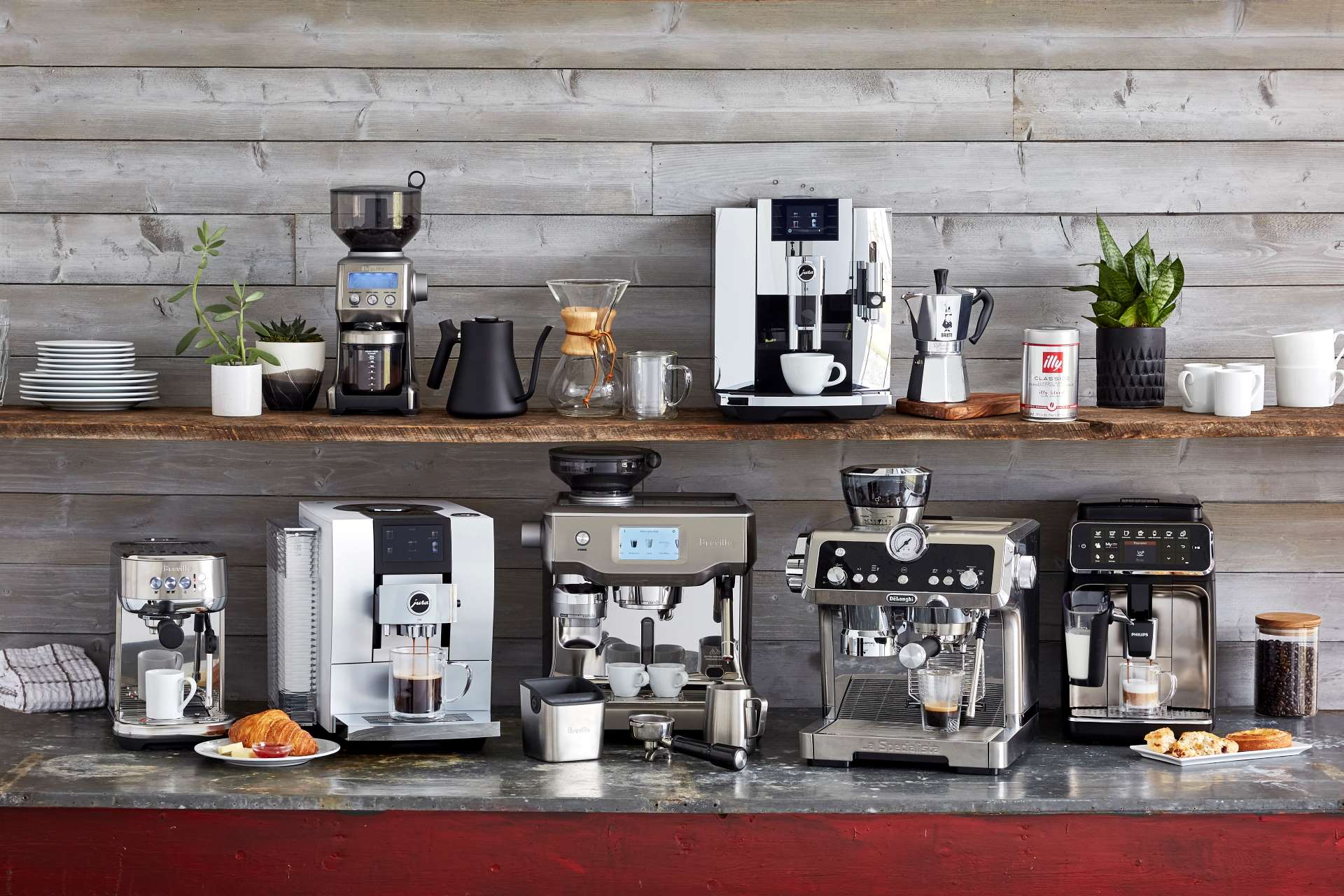
Credit: learn.surlatable.com
Choosing Coffee Beans
Choosing the right coffee beans is the first step to making a great cup at home. The beans affect every part of the flavor and aroma. Knowing how to pick quality beans helps you enjoy coffee that suits your taste.
Bean Quality And Origin
High-quality beans come from reputable farms. The origin plays a big role in flavor. Coffee from different countries has unique tastes. For example, beans from Ethiopia often have fruity notes. Beans from Brazil tend to be nutty and chocolatey. Choose beans that match the flavor you enjoy.
Freshness And Roast Date
Freshness is key for good coffee. Look for beans with a clear roast date on the package. Fresh beans give brighter and richer flavors. Avoid beans that are too old or stale. Grinding beans just before brewing keeps the coffee flavorful and aromatic.
Single Origin Vs Blends
Single origin beans come from one place. They offer distinct and pure flavors. Blends mix beans from different regions. They create balanced and complex tastes. Pick single origin to explore unique flavors. Choose blends for a smooth and consistent cup.
:max_bytes(150000):strip_icc()/coffee_960-7882dec1ea02416d830a0747eb657a2f.jpg)
Credit: www.eatingwell.com
Water Matters
Water is the main ingredient in coffee. Its quality and temperature shape your coffee’s flavor.
Pure, clean water helps bring out the best taste in your brew. Bad water can ruin good beans.
Paying attention to how much water you use matters too. The right amount balances strength and flavor.
Water Quality And Filtration
Use fresh, clean water free of strong odors or tastes. Tap water often contains minerals and chemicals.
These can change coffee flavor and mask the bean’s natural notes. Filtering water removes many impurities.
A simple charcoal or carbon filter improves taste without costing much. Avoid distilled water; it lacks minerals needed for extraction.
Ideal Water Temperature
Heat water between 195°F and 205°F for best results. Too hot water burns coffee, making it bitter.
Too cool water leads to weak, sour coffee. Boil water, then wait 30 seconds before brewing.
This range helps extract flavors evenly and fully. Consistent temperature keeps your coffee tasting great every time.
Coffee-to-water Ratio
Balance coffee and water to control strength and taste. A common ratio is 1 to 16—one gram coffee per 16 grams water.
Use a kitchen scale for accuracy. More coffee means stronger brew; less coffee makes it lighter.
Adjust ratio to your taste, but start with the standard. It guides you to a well-rounded, flavorful cup.
Grinding Coffee
Grinding coffee is a vital step in brewing a great cup at home. The grind size affects how water extracts flavors from the beans. Choosing the right grind size depends on your brewing method. Consistency in grinding ensures even extraction and balanced taste. Grinding just before brewing preserves the coffee’s aroma and freshness. This section explains how to grind coffee properly for the best results.
Grind Size By Brew Method
Different brewing methods need different grind sizes. For example, espresso requires a fine grind. Drip coffee makers work best with medium grind. French press demands a coarse grind to prevent bitterness. Using the correct grind size helps control extraction time. This affects the flavor and strength of your coffee.
Consistency And Equipment
Consistent grind size is crucial for even extraction. Burr grinders produce uniform grounds compared to blade grinders. Burr grinders crush beans between two surfaces for steady particles. Blade grinders chop beans unevenly, causing inconsistent extraction. Investing in a burr grinder improves coffee quality. Clean your grinder regularly to avoid stale flavors.
Grinding Just Before Brewing
Grinding coffee just before brewing keeps it fresh and flavorful. Ground coffee loses aroma quickly due to exposure to air. Freshly ground coffee releases oils that enhance taste and smell. Avoid grinding coffee hours before brewing to prevent staleness. Grind only the amount you need to enjoy every cup at its best.
Brewing Techniques
Brewing coffee at home can be a delightful ritual. It brings out unique flavors and aromas from your beans. Different brewing methods change the taste and texture of your coffee. Choosing the right technique helps you enjoy coffee just the way you like it.
French Press Method
The French press makes rich and full-bodied coffee. Use coarsely ground coffee for the best results. Add hot water just off the boil and stir gently. Let it brew for four minutes before pressing the plunger down slowly. This method keeps the oils in the coffee, enhancing flavor.
Pour Over Method
Pour over coffee is clean and bright. Use a medium grind size for even extraction. Place a filter in the dripper and rinse it with hot water. Pour hot water slowly over the grounds in circular motions. This method highlights delicate and complex flavors in your coffee.
Espresso Basics
Espresso requires a fine grind and high pressure. Use about 18-20 grams of coffee for a double shot. Tamp the coffee firmly and evenly in the portafilter. Brew time should be around 25-30 seconds. Espresso is strong and concentrated, perfect for quick coffee boosts or milk-based drinks.
Cold Brew Tips
Cold brew coffee is smooth and less acidic. Use coarsely ground coffee and cold, filtered water. Mix coffee and water in a jar, then steep for 12 to 24 hours in the fridge. Strain the grounds using a fine mesh or filter. Serve cold, with ice or milk, for a refreshing drink.
Extraction And Timing
Extraction and timing play a key role in making the best cup of coffee at home. These factors control how flavors are drawn from the coffee grounds. Proper extraction brings balance and depth to your brew. Poor timing or extraction results in weak or bitter coffee.
Understanding extraction and timing helps you enjoy rich, flavorful coffee every time. Small adjustments can make a big difference. Pay close attention to how long your coffee brews and how it extracts.
Bloom Phase Importance
The bloom phase is the first step in coffee brewing. Hot water contacts coffee grounds and releases trapped gases. This process allows better flavor extraction later.
During bloom, pour a small amount of water and wait 30 to 45 seconds. This step prevents uneven extraction and enhances aroma. Skipping bloom can cause sour or flat coffee.
Optimal Brewing Time
Each brewing method has an ideal brewing time. This time controls how much flavor you get from the grounds. For example, drip coffee usually brews for 4 to 6 minutes.
Shorter brewing times can under-extract the coffee, making it taste weak. Longer times may over-extract, causing bitterness. Find the right balance based on your method and grind size.
Avoiding Over And Under Extraction
Over-extraction happens when water stays too long with the grounds. It pulls out bitter, harsh compounds. The result is a sharp, unpleasant taste.
Under-extraction occurs when brewing is too short or water is too cool. The coffee tastes sour, acidic, or watery. Both extremes reduce coffee quality.
Use consistent grind size and proper timing to avoid these issues. Adjust as needed to achieve smooth, balanced coffee flavor.
Taste And Flavor
Taste and flavor define the quality of your coffee. They create the experience that coffee lovers cherish. Every cup has unique characteristics shaped by the beans and brewing process. Understanding these traits helps you enjoy coffee more deeply. Let’s explore key aspects of taste and flavor.
Natural Sweetness And Acidity
Coffee naturally contains sugars that create a sweet taste. This sweetness balances the natural acidity in the beans. Acidity brings brightness and liveliness to the cup. It is not sourness but a sharp, clean sensation. Good coffee has a fine balance between sweetness and acidity. This balance makes the drink pleasant and refreshing.
Body And Mouthfeel
Body refers to how coffee feels in your mouth. It can be light, medium, or full. Mouthfeel describes the texture, such as smooth or creamy. A silky body feels soft on your tongue. A thicker body gives a richer experience. The brewing method affects the body. For example, French press coffee often has a fuller body than drip coffee.
Detecting Fruit And Floral Notes
Many coffees carry hints of fruit and flowers. These notes add complexity to the flavor. You might taste berries, citrus, or stone fruits. Floral notes can remind you of jasmine or rose. These flavors come from the coffee’s origin and roasting level. Paying attention helps you spot these delicate tastes. It makes each cup more interesting and enjoyable.
Common Mistakes To Avoid
Making a great cup of coffee at home takes practice and attention. Avoiding common mistakes helps improve flavor and aroma. Many people overlook simple errors that ruin their brew. Fixing these issues will bring a better coffee experience every time.
Using Stale Beans
Fresh coffee beans are key to a tasty cup. Beans lose flavor quickly after roasting. Old beans taste flat and dull. Buy small amounts and use them within weeks. Store beans in an airtight container away from light.
Incorrect Water Temperature
Water that is too hot or cold spoils coffee taste. Ideal temperature is between 195°F and 205°F (90°C to 96°C). Boiling water burns the coffee, causing bitterness. Water that is too cool leads to weak flavor. Use a thermometer or electric kettle with temperature control.
Improper Grind Size
Grinding coffee correctly matches your brewing method. Too coarse grind makes coffee weak and sour. Too fine grind causes over-extraction and bitterness. Use a grinder with adjustable settings. Match grind size to your coffee maker for best results.
Tools And Equipment
Making the best cup of coffee at home starts with the right tools and equipment. The quality of your coffee depends on what you use to prepare it. Choosing the proper devices can improve flavor and consistency. This section covers grinders, brewing devices, and maintenance tips to keep your gear working well.
Choosing The Right Grinder
A good grinder is key for fresh coffee. Burr grinders provide a consistent grind size, unlike blade grinders. Consistency helps extract the best flavor from the beans. Adjust the grind size based on your brewing method. For example, use coarse grind for French press and fine grind for espresso. Grinding beans just before brewing keeps the coffee fresh and aromatic.
Brewing Devices
Select a brewing device that fits your taste and routine. Popular options include drip coffee makers, French presses, and pour-over cones. Each device offers a unique flavor and body. Drip machines are convenient for daily use. French presses give a rich and full-bodied cup. Pour-over allows precise control over brewing time and temperature. Choose equipment that matches your skill and preference.
Maintenance And Cleaning
Clean your coffee tools regularly to avoid stale flavors. Oils and residue build up over time and affect taste. Rinse brewing devices after each use. Deep clean grinders and machines weekly. Use mild detergent and warm water for cleaning. Avoid harsh chemicals that may damage equipment. Proper maintenance ensures long-lasting tools and fresh coffee every time.
Storing Coffee
Storing coffee correctly plays a big role in preserving its flavor and aroma. Fresh coffee tastes best and keeps its rich character longer when stored well. Poor storage can cause coffee to lose its freshness quickly. This section explains how to store coffee for the best results.
Proper Storage Containers
Use containers made of glass, ceramic, or stainless steel. These materials do not absorb odors or moisture. Avoid plastic containers because they can affect coffee flavor. Choose containers with airtight lids to keep air out. Small containers are better to reduce exposure when opened.
Avoiding Moisture And Air
Moisture damages coffee and causes it to spoil faster. Always keep coffee dry by sealing the container tightly. Avoid opening the container often to limit air exposure. Oxygen causes coffee to go stale, losing aroma and taste. Store only the amount of coffee you can use in a week.
Ideal Storage Locations
Store coffee in a cool, dark place away from heat and light. Heat speeds up the loss of flavor and freshness. Avoid keeping coffee near ovens, stoves, or windows. Do not store coffee in the refrigerator or freezer. Temperature changes and moisture from these places harm coffee quality.

Credit: www.amazon.com
Frequently Asked Questions
What Is The Secret To A Good Cup Of Coffee?
The secret to a good cup of coffee lies in fresh, high-quality beans, precise grind size, proper water temperature, and correct coffee-to-water ratio. Use filtered water and brew immediately after grinding to preserve flavor and aroma. Consistent extraction ensures a balanced, flavorful cup every time.
How To Make The Perfect Cup Of Coffee At Home And Start Your Day Off Right?
Use fresh, high-quality beans and grind just before brewing. Heat filtered water to 195-205°F. Maintain a 1:15 coffee-to-water ratio. Brew using your preferred method, ensuring consistent grind size. Enjoy natural sweetness and rich flavors for a perfect morning cup.
How To Make A Cup Of Coffee Taste Better?
Use fresh, high-quality beans and grind just before brewing. Maintain water temperature around 195-205°F. Use filtered water and correct coffee-to-water ratio. Brew with consistent grind size for even extraction. Enjoy natural sweetness and balanced flavors for a better-tasting cup.
What Is The Secret To Great Tasting Coffee?
The secret to great-tasting coffee lies in fresh, high-quality beans, proper grind size, correct water temperature, and the right coffee-to-water ratio. Use filtered water and brew promptly after grinding for optimal flavor and aroma.
Conclusion
Making the best cup of coffee at home takes simple steps. Use fresh, quality beans and clean water. Grind beans just before brewing for best flavor. Keep water temperature between 195°F and 205°F. Measure coffee and water carefully to balance taste.
Choose a brewing method that suits your style. Enjoy the natural sweetness and rich body of your coffee. Practice often to find what you like best. Small changes can make a big difference. Start today and savor your perfect homemade coffee.




